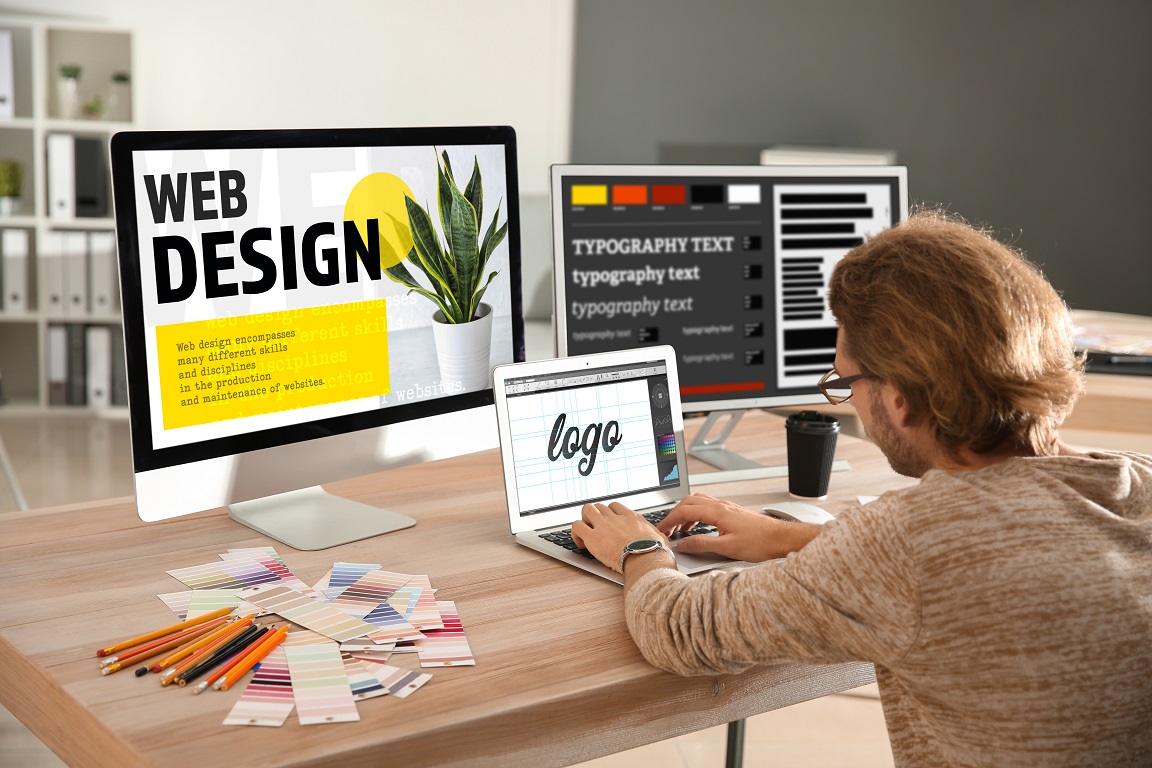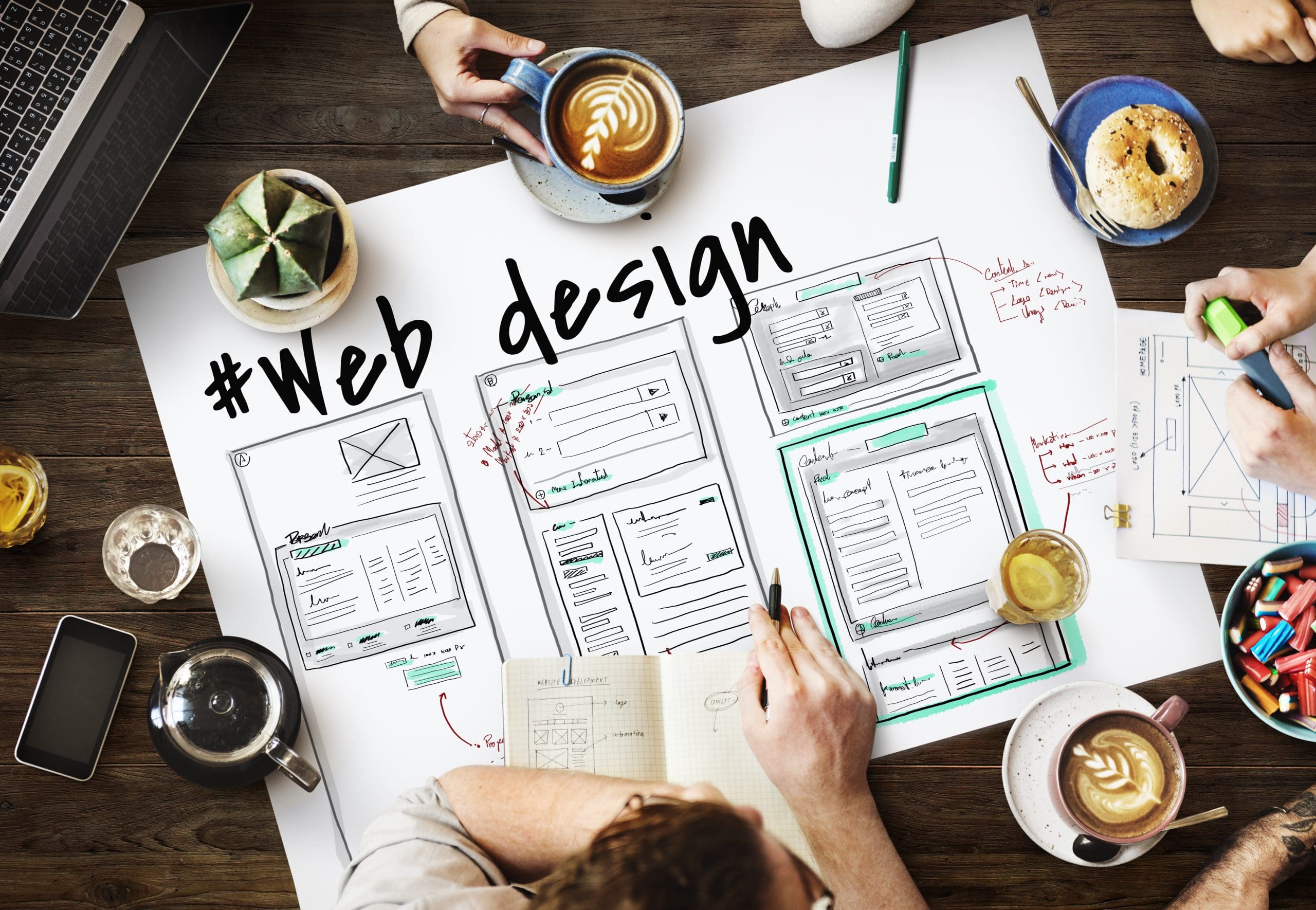The Relevance of User Experience in Efficient Web Design Techniques
User experience (UX) functions as a keystone in effective web design techniques. It forms exactly how individuals interact with a website, influencing their satisfaction and chance of returning. A well-designed UX can improve involvement with intuitive navigating and receptive layouts. However, forgeting these aspects might cause disappointment and boosted bounce prices. Comprehending the details of UX is crucial for designers aiming to create engaging digital experiences that resonate with diverse target markets. What elements absolutely drive effective user involvement?
Recognizing User Experience and Its Influence on Design
Although user experience (UX) is frequently regarded as a plain facet of web design, it fundamentally shapes how individuals engage with an internet site. UX includes all aspects of the user's interaction, consisting of usability, ease of access, and general satisfaction. A favorable UX fosters interaction, motivating users to check out the website and return in the future. Alternatively, an unfavorable experience can cause disappointment, causing high bounce prices and lost opportunities for conversion.
Design components like content, format, and navigation organization play important duties fit this experience. Effective UX design anticipates user needs and preferences, guaranteeing that info is aesthetically appealing and easily obtainable. Additionally, recognizing user behavior through analytics can offer useful understandings, notifying layout choices that enhance functionality. Inevitably, a complete understanding of UX allows designers to produce web sites that not just attract customers however also advertise meaningful interactions that straighten with company goals and user assumptions.
Trick Principles of Effective User Experience
Efficient user experience hinges on numerous key principles that boost site performance and interaction. Intuitive navigating layout, responsive design essentials, and the significance of aesthetic power structure are crucial elements that add to a seamless communication between customers and web content. Comprehending these concepts allows developers to create even more obtainable and easy to use electronic atmospheres.
User-friendly Navigation Design
User-friendly navigating style serves as a crucial entrance to their general experience when users experience a site. Efficient navigation enables individuals to easily situate the details they look for, enhancing their interaction with the site. Trick principles include clear labeling, logical organization, and constant placement of navigation aspects. Labels need to be uncomplicated, enabling users to forecast the web content they will find. A well-structured pecking order assists customers comprehend the partnership between various areas, directing them via the web site seamlessly. Additionally, receptive food selections and easily accessible links contribute to a liquid experience throughout devices. By prioritizing intuitive navigating, designers can considerably minimize user irritation and boost engagement, ultimately cultivating a positive assumption of the site and its web content.
Responsive Format Fundamentals
A well-structured navigation system normally brings about the need for a receptive design, which is crucial in today's diverse electronic landscape. A responsive layout guarantees that websites feature effortlessly across different devices, including smart devices, desktop computers, and tablet computers. This adaptability improves user experience by permitting content to be easily accessible and aesthetically systematic, no matter of display dimension. Secret concepts of responsive style consist of fluid grids, flexible images, and media questions, which facilitate ideal viewing. Furthermore, prioritizing touch-friendly aspects boosts communication on mobile devices. By carrying out a responsive design, developers can fit customers' demands, reduce bounce rates, and increase engagement. Ultimately, a well-executed responsive layout cultivates a positive user experience, urging site visitors to check out the web site better.
Visual Pecking Order Significance
Aesthetic power structure plays an important role in guiding individuals via an internet site, guaranteeing that critical details catches their attention. By tactically making use of dimension, comparison, color, and spacing, designers can create a clear path for users to follow. Larger aspects usually attract the eye, suggesting their significance, while contrasting shades can highlight calls to activity. In addition, consistent placement and group of related content enhance comprehension, making navigation intuitive. Reliable usage of visual hierarchy not only improves use yet likewise supports the overall aesthetic of the site, cultivating a favorable user experience. When users can quickly identify the most vital info, they are most likely to involve with the web content, resulting in raised complete satisfaction and communication with the internet site.
The Function of Usability in Web Design
Functionality plays an important duty in web design, especially through navigation simpleness and adherence to ease of access requirements. Efficient navigating improves user fulfillment by allowing visitors to discover information swiftly and with ease. Conference ease of access standards ensures that all individuals, no matter of their capabilities, can effectively connect with the site.
Navigation Simpleness
Simpleness in navigating stands as a foundation of effective web design, greatly influencing user experience. A structured navigating system allows individuals to find information quickly and without effort, lowering stress and enhancing complete satisfaction. Clear labeling and logical framework are necessary aspects, guiding customers effortlessly through the internet site. Redundant links or overly intricate food selections can confuse customers, bring about boosted bounce rates. Furthermore, mobile responsiveness needs to be thought about, guaranteeing navigating remains Click Here straightforward throughout gadgets. Focusing on crucial web pages and lessening clutter better sustains user involvement. Effective navigation not just promotes a favorable experience however additionally urges users to discover the site better, ultimately resulting in higher conversion rates. In this respect, navigating simplicity works as an important consider the total effectiveness of web design strategies.
Access Criteria
User involvement is significantly boosted when internet sites comply with availability standards, making certain that all customers, despite their capabilities, can browse and engage successfully. Conformity with these requirements not just broadens the target market however likewise improves total user contentment. Easily accessible design integrates features such as text alternatives for pictures, keyboard navigating, and enough shade contrast, which facilitate use by people with handicaps. On top of that, executing these requirements can positively impact search engine optimization (SEO) by enhancing site framework and clarity. As web design develops, focusing on accessibility ends up being essential in cultivating an inclusive electronic atmosphere. By accepting these standards, designers add to a much more fair internet, eventually driving user commitment and engagement.
Value of Responsive Layout for User Involvement
As customers increasingly accessibility web sites with a selection of tools, the value of responsive layout ends up being paramount for involving individuals successfully. Receptive layout assurances that an internet site adjusts seamlessly to various display sizes, supplying a perfect watching experience regardless of the device made use of. This versatility improves user involvement by assisting in simpler navigating and interaction with content.
When customers run into a site that is responsive, they are more probable to stay much longer, check out additionally, and return in the future. A properly designed responsive layout lessens the stress typically linked with scrolling and zooming on smaller screens, therefore reducing bounce prices. Additionally, receptive design can positively influence search engine rankings, as online search engine prioritize mobile-friendly websites. In today's electronic landscape, where mobile usage remains to increase, implementing receptive style is not simply valuable, but important for keeping user engagement and assuring a favorable experience throughout all gadgets.
Enhancing Load Times for Better User Satisfaction

To enhance tons times, web developers need to focus on optimizing images, leveraging browser caching, and lessening HTTP requests. Furthermore, utilizing Material Delivery Networks (CDNs) can accelerate content distribution by dispersing it throughout numerous geographical locations. Improving code, such as pressing CSS and JavaScript files, additionally adds to much faster filling speeds.
Inevitably, a dedication to improving tons times not only enhances user fulfillment but additionally enhances brand name loyalty and improves the probability of repeat visits. A swift, smooth experience is necessary for keeping customers and promoting positive interactions.
The Impact of Visual Hierarchy on User Interaction
Visual pecking order functions as a vital component in guiding user communication on a site. By organizing material in a manner that focuses on info aesthetically, developers can influence just how users involve and navigate with a website. This pecking Read Full Report order is established through different design techniques, consisting of dimension, spacing, shade, and comparison. Larger fonts or vibrant colors draw attention to vital components, such as calls to activity or headings, while controlled colors and smaller sized fonts can suggest subordinate info.
Effective visual pecking order aids customers rapidly identify what is essential, lowering cognitive lots and boosting functionality. It enables intuitive navigating, making it less complicated for customers to locate what they need without frustration. As individuals engage with a web site, a well-structured visual pecking order promotes an extra rewarding experience, eventually bring about higher interaction and conversion prices. Developers need to prioritize these principles to develop an user-centered and efficient internet atmosphere.
Measuring User Experience: Techniques and tools

Often Asked Concerns
Exactly How Can I Improve My Site's User Experience on a Budget?
To enhance a site's user experience on a budget plan, one can maximize page load rate, simplify navigation, implement receptive layout, boost material clarity, and gather user comments for continuous refinements, making sure a gratifying site visitor experience.
What Are Typical User Experience Blunders to Stay Clear Of in Web Design?
Typical user experience blunders in web design include cluttered layouts, poor navigating, slow loading times, absence of mobile responsiveness, ignoring ease of access, inconsistent branding, and failing to focus on user feedback - Web Design Agency. Each can significantly impede total website performance
How Often Should I Update My Internet Site for Better User Experience?
Web sites ought to be upgraded on a regular basis, ideally every couple of months, to maintain suitable user experience. Regular updates help address usability issues, revitalize content, and adapt to altering user requirements, making certain the website continues to be interesting and relevant.

Can User Experience Impact Search Engine Optimization Rankings on My Internet site?
User experience can greatly influence SEO positions, as search engines prioritize websites that supply smooth navigation, you can try here fast filling times, and appealing material. A positive user experience can result in reduced bounce rates and higher search exposure.
What Function Does Accessibility Play in User Experience Design?
Ease of access plays an important function in user experience style by guaranteeing that all individuals, regardless of capacities, can navigate and communicate with an internet site effectively. This inclusivity enhances general fulfillment and interaction among diverse individuals.
User experience (UX) is typically perceived as a simple aspect of web design, it basically forms exactly how individuals interact with a site. User interaction is significantly enhanced when sites stick to accessibility requirements, ensuring that all customers, no matter of their abilities, can browse and connect efficiently. Measuring user experience (UX) is vital for understanding exactly how successfully an internet site meets the demands of its individuals. Furthermore, use testing, where actual customers navigate the website while viewers note troubles, supplies direct feedback on user experience. Usual user experience errors in web style consist of cluttered layouts, poor navigating, slow-moving loading times, absence of mobile responsiveness, ignoring access, irregular branding, and falling short to focus on user comments.